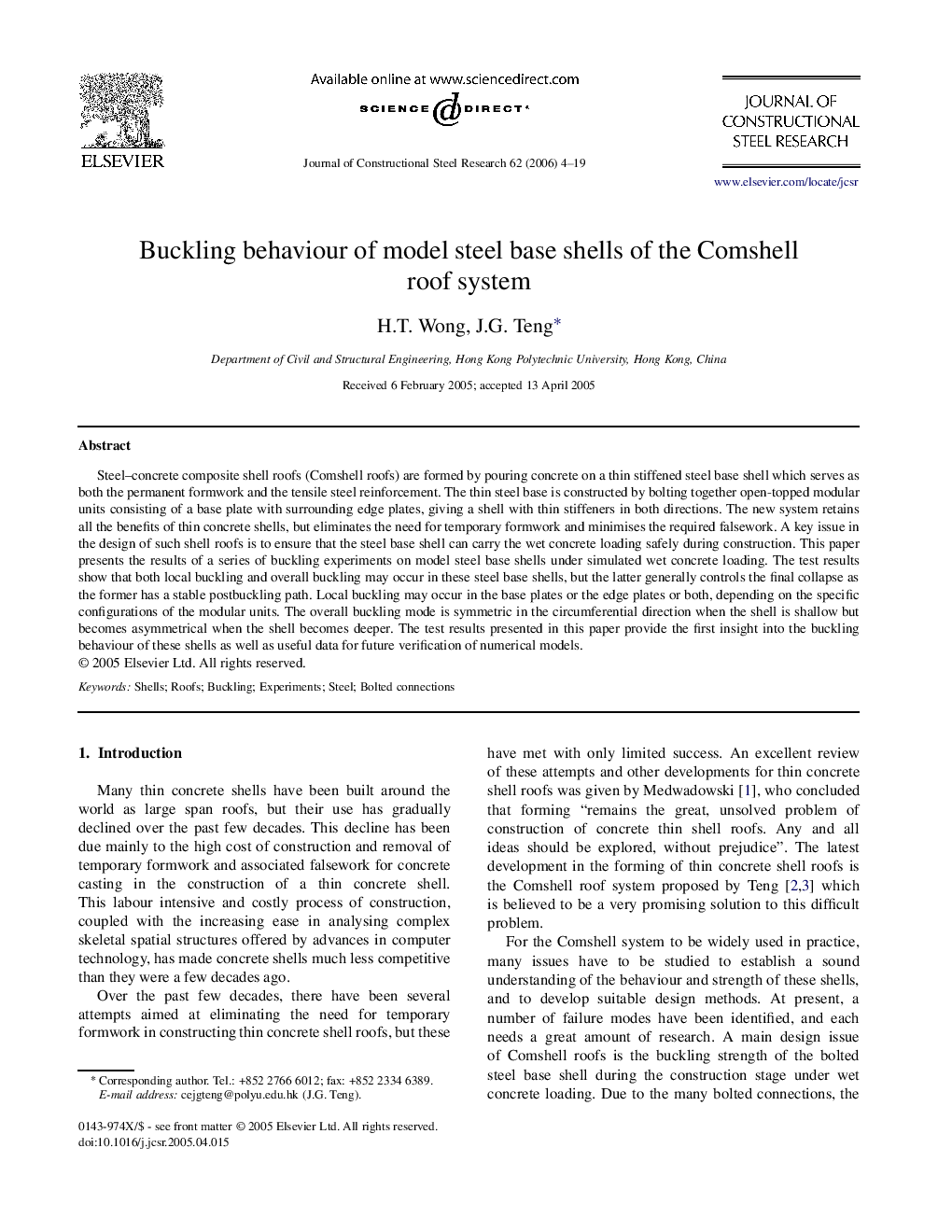| Article ID | Journal | Published Year | Pages | File Type |
|---|---|---|---|---|
| 286198 | Journal of Constructional Steel Research | 2006 | 16 Pages |
Steel–concrete composite shell roofs (Comshell roofs) are formed by pouring concrete on a thin stiffened steel base shell which serves as both the permanent formwork and the tensile steel reinforcement. The thin steel base is constructed by bolting together open-topped modular units consisting of a base plate with surrounding edge plates, giving a shell with thin stiffeners in both directions. The new system retains all the benefits of thin concrete shells, but eliminates the need for temporary formwork and minimises the required falsework. A key issue in the design of such shell roofs is to ensure that the steel base shell can carry the wet concrete loading safely during construction. This paper presents the results of a series of buckling experiments on model steel base shells under simulated wet concrete loading. The test results show that both local buckling and overall buckling may occur in these steel base shells, but the latter generally controls the final collapse as the former has a stable postbuckling path. Local buckling may occur in the base plates or the edge plates or both, depending on the specific configurations of the modular units. The overall buckling mode is symmetric in the circumferential direction when the shell is shallow but becomes asymmetrical when the shell becomes deeper. The test results presented in this paper provide the first insight into the buckling behaviour of these shells as well as useful data for future verification of numerical models.
